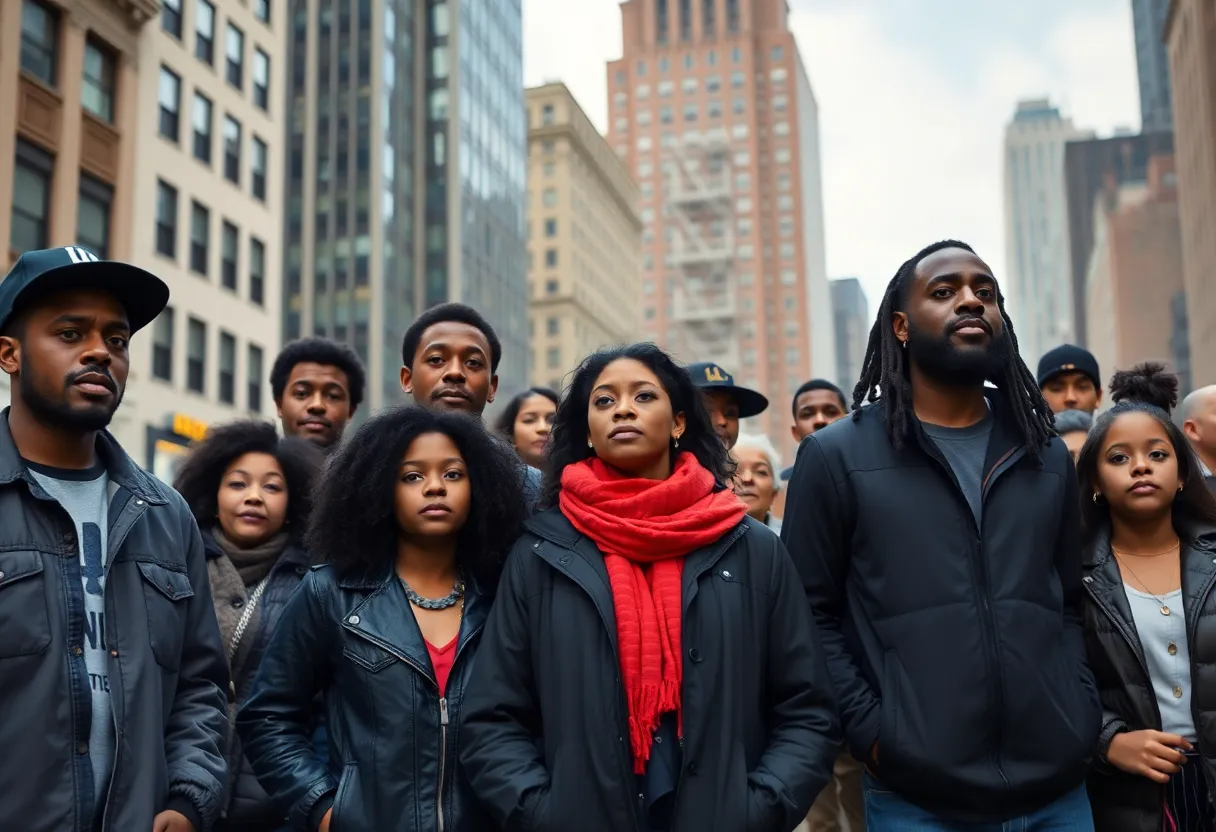Washington, D.C., November 10, 2025
The Trump administration has directed states to reverse Supplemental Nutrition Assistance Program (SNAP) payments made due to recent court rulings following a Supreme Court stay on those decisions. This controversial directive impacts 42 million Americans relying on SNAP benefits amidst a government shutdown. Several states, led by Democratic officials, had already issued these payments but now face penalties. The situation is causing confusion and uncertainty for millions of recipients, escalating legal challenges and a bipartisan push in Congress to secure funding amid the ongoing crisis.
Washington, D.C. – The Trump administration has ordered states to reverse full Supplemental Nutrition Assistance Program (SNAP) payments made under recent court orders, following a U.S. Supreme Court stay on those rulings. This decision affects the benefits relied upon by 42 million Americans and has drawn backlash from states and lawmakers. Over two dozen states—many led by Democratic officials—had issued full SNAP disbursements after winning court battles during a government shutdown that had threatened program funding. However, the Department of Agriculture now considers those payments “unauthorized” and warned that states could face penalties for proceeding.
States like Wisconsin and Massachusetts had already distributed benefits, with some using state funds. The reverse directive is causing confusion and could pose “catastrophic operational disruptions,” according to state officials. Senator Lisa Murkowski criticized the potential penalization of states using their own funds, while others including Massachusetts Governor Maura Healey and Wisconsin Governor Tony Evers have vowed to challenge the move legally. Maryland Governor Wes Moore highlighted the chaotic and shifting federal guidance, noting four different directives in six days. Meanwhile, a bipartisan Senate package is being formed to ensure SNAP funding and reimbursements during the shutdown.
The U.S. Department of Agriculture (USDA) has ordered states to reverse steps taken to issue full Supplemental Nutrition Assistance Program (SNAP) benefits amid the ongoing federal government shutdown, marking the first lapse in SNAP’s 60-year history. This directive follows a U.S. Supreme Court decision allowing the Trump administration to withhold $4 billion in funding while a legal appeal is pending. Although a federal judge had earlier required the administration to fully fund November SNAP benefits, the Supreme Court’s ruling now blocks that directive, leading USDA to warn states against proceeding with full disbursements.
States like Massachusetts and New Jersey, which had begun issuing full benefits following the earlier court ruling, have condemned the USDA’s new guidance and threatened legal action, with Massachusetts’ governor pledging to fight for recipients’ rights in court. The administration argues that technical challenges and limited emergency funds complicate immediate full distribution. In the meantime, millions of SNAP recipients are experiencing increased hardship, relying more heavily on food pantries and compromising basic needs. The matter remains entangled in legal proceedings, with the First U.S. Circuit Court of Appeals granted additional time to consider the administration’s request to limit funding.
As of November 2025, states administering the Supplemental Nutrition Assistance Program (SNAP), which supports approximately 42 million Americans, are facing major uncertainty due to actions taken by the Trump administration during a federal government shutdown. After a federal judge ordered the administration to pay full monthly SNAP benefits, several states disbursed funds to recipients. However, a Supreme Court justice placed a temporary hold on that order, and the administration is now demanding that states “undo” those payments.
A federal appeals court is considering a longer freeze on full benefits, and Congress is deliberating whether to include SNAP funding in a potential resolution to the shutdown. While some states used emergency funds or partial federal support to issue benefits, millions of recipients are still without assistance. The administration argues that the judge’s order infringes on the separation of powers. Some states, like Wisconsin and Connecticut, are resisting federal orders to reclaim benefits already disbursed, with Democratic governors vowing not to penalize recipients caught in the political crossfire.
The U.S. Supreme Court has temporarily allowed the Trump administration to withhold approximately $4 billion in funding from the Supplemental Nutrition Assistance Program (SNAP), which serves 42 million low-income Americans, amid an ongoing federal shutdown. The decision came after a lower court ordered the Department of Agriculture to fully fund SNAP, usually costing $8.5–$9 billion monthly. Justice Ketanji Brown Jackson issued the stay to give the 1st U.S. Circuit Court of Appeals time to rule on the administration’s appeal. Earlier, U.S. District Judge John McConnell mandated the USDA to use funds from a different program to cover the shortfall, accusing the administration of politically motivated withholding.
Despite the Supreme Court’s intervention, USDA told states it was preparing to comply with the previous order, creating confusion. Several states responded by instructing agencies to issue full benefits. SNAP support lapsed for the first time in the program’s six-decade history, forcing many recipients toward food pantries or other sacrifices. Critics argue the administration is neglecting urgent public needs, while legal battles continue to determine the final outcome.
The U.S. Supreme Court has allowed President Donald Trump to freeze an additional $4 billion in Supplemental Nutrition Assistance Program (SNAP) benefits amid the nation’s longest government shutdown. The decision, an administrative stay, delays the implementation of a lower court ruling that required the administration to provide full funding. This has left about 42 million low-income Americans—including families, seniors, and individuals with disabilities—uncertain about receiving food aid. Previously, the administration had agreed to release $5 billion from a contingency fund, but refused to cover the full amount.
The issue stems from political gridlock during the shutdown, largely centered around Republican opposition to extending Affordable Care Act subsidies. U.S. District Judge John McConnell had ordered full SNAP funding, accusing the administration of politically motivated withholding. The Justice Department escalated the case to the Supreme Court, arguing the ruling would cause fiscal chaos. Despite the ruling, some states like New York, New Jersey, and Massachusetts issued full November SNAP benefits following USDA guidance. The ongoing legal and political standoff has placed millions of vulnerable Americans in financial and nutritional distress.
Frequently Asked Questions (FAQ)
What is the current status of SNAP benefits amid the government shutdown?
The Trump administration has ordered states to reverse full SNAP payments made under recent court orders, following a U.S. Supreme Court stay on those rulings. This decision affects the benefits relied upon by 42 million Americans and has drawn backlash from states and lawmakers. Over two dozen states—many led by Democratic officials—had issued full SNAP disbursements after winning court battles during a government shutdown that had threatened program funding. However, the Department of Agriculture now considers those payments “unauthorized” and warned that states could face penalties for proceeding.
How are states responding to the USDA’s directive to reverse SNAP payments?
States like Wisconsin and Massachusetts had already distributed benefits, with some using state funds. The reverse directive is causing confusion and could pose “catastrophic operational disruptions,” according to state officials. Senator Lisa Murkowski criticized the potential penalization of states using their own funds, while others including Massachusetts Governor Maura Healey and Wisconsin Governor Tony Evers have vowed to challenge the move legally. Maryland Governor Wes Moore highlighted the chaotic and shifting federal guidance, noting four different directives in six days. Meanwhile, a bipartisan Senate package is being formed to ensure SNAP funding and reimbursements during the shutdown.
What is the impact of the Supreme Court’s decision on SNAP funding?
The U.S. Supreme Court has temporarily allowed the Trump administration to withhold approximately $4 billion in funding from the Supplemental Nutrition Assistance Program (SNAP), which serves 42 million low-income Americans, amid an ongoing federal shutdown. The decision came after a lower court ordered the Department of Agriculture to fully fund SNAP, usually costing $8.5–$9 billion monthly. Justice Ketanji Brown Jackson issued the stay to give the 1st U.S. Circuit Court of Appeals time to rule on the administration’s appeal. Earlier, U.S. District Judge John McConnell mandated the USDA to use funds from a different program to cover the shortfall, accusing the administration of politically motivated withholding.
How are states like Massachusetts and New Jersey responding to the USDA’s new guidance?
States like Massachusetts and New Jersey, which had begun issuing full benefits following the earlier court ruling, have condemned the USDA’s new guidance and threatened legal action, with Massachusetts’ governor pledging to fight for recipients’ rights in court. The administration argues that technical challenges and limited emergency funds complicate immediate full distribution. In the meantime, millions of SNAP recipients are experiencing increased hardship, relying more heavily on food pantries and compromising basic needs. The matter remains entangled in legal proceedings, with the First U.S. Circuit Court of Appeals granted additional time to consider the administration’s request to limit funding.
What is the broader impact of the government shutdown on SNAP recipients?
The U.S. Supreme Court has allowed President Donald Trump to freeze an additional $4 billion in Supplemental Nutrition Assistance Program (SNAP) benefits amid the nation’s longest government shutdown. The decision, an administrative stay, delays the implementation of a lower court ruling that required the administration to provide full funding. This has left about 42 million low-income Americans—including families, seniors, and individuals with disabilities—uncertain about receiving food aid. Previously, the administration had agreed to release $5 billion from a contingency fund, but refused to cover the full amount.
Key Features of the SNAP Benefit Situation Amid the Government Shutdown
| Feature | Description |
|---|---|
| Federal government shutdown | The Trump administration’s actions are taking place during the nation’s longest government shutdown, affecting SNAP funding. |
| U.S. Supreme Court intervention | The Supreme Court allowed the withholding of $4 billion in SNAP funding, impacting millions of low-income Americans. |
| State responses | States like Massachusetts and Wisconsin are pushing back against the USDA’s directive to reverse SNAP payments and threaten legal action. |
| Legal proceedings ongoing | Multiple legal challenges and appeals are still underway, contributing to uncertainty for SNAP beneficiaries. |
Now Happening on X
- @VGupta30 (November 9, 2025, 11:06 AM): Cozen O’Connor Public Strategies’ New York Note covers Governor Hochul declaring a SNAP state of emergency, Mayor Adams planning to hire 5,000 NYPD officers, and the city council advancing maternal health and housing bills. View on X
- @s2_underground (November 4, 2025, 6:24 PM): Election Day in NYC is marked by bomb threats and voting issues, the White House confirms SNAP program cessation during the shutdown, and a catastrophic plane crash occurs at Louisville airport. View on X
- @MustReadNewz (November 4, 2025, 3:24 PM): NYPD and FBI are investigating swatting incidents at NYC polling sites during the tightening mayoral election. View on X
- @fr045054 (November 6, 2025, 8:30 AM): The first snow storm in the NYC area tests management efficiency under crisis, alongside recent murders in the subway and four killings found in a Bronx apartment. View on X
- @SPECNews1CNY (November 4, 2025, 5:39 PM): Evening briefing includes election coverage on Spectrum News 1, classes resuming at SUNY Morrisville after a shooting, and the federal shutdown tying for the longest ever. View on X
- @nycmaven44637 (November 4, 2025, 3:12 PM): NYPD and FBI are investigating swatting incidents at NYC polling sites amid the tightening mayoral election. View on X
- @SPECNews1HV (November 5, 2025, 5:30 PM): Evening briefing covers Troy council advancing a city hall vote, absentee ballots deciding Saratoga County races, and expected high winds upstate. View on X
- @RetiredNYCPD (November 4, 2025, 1:47 PM): NYPD and FBI are investigating swatting incidents at NYC polling sites during the tightening mayoral election. View on X
- @nycemergencymgt (November 4, 2025, 7:36 AM): Election Day updates include polls open until 9 PM, NYC public schools closed, alternate side parking suspended but meters in effect, with links to check registration and find voting sites. View on X
- @SpecNews1Albany (November 5, 2025, 5:30 PM): Evening briefing includes Troy council pushing ahead on a city hall vote, absentee ballots to decide Saratoga County races, and high winds expected upstate. View on X
Deeper Dive: News & Info About This Topic
HERE Resources
Governor Hochul Ensures Full SNAP Benefits for New Yorkers
New York State Faces Surging Energy Costs Amid Data Center Demand
Adrienne Harris Resigns as Superintendent of NYDFS
America’s Leading Doctors Ranking Released
Federal Budget Bill Passes, Threatening New York’s Social Programs
Author: STAFF HERE NEW YORK WRITER
The NEW YORK STAFF WRITER represents the experienced team at HERENewYork.com, your go-to source for actionable local news and information in New York, the five boroughs, and beyond. Specializing in "news you can use," we cover essential topics like product reviews for personal and business needs, local business directories, politics, real estate trends, neighborhood insights, and state news affecting the area—with deep expertise drawn from years of dedicated reporting and strong community input, including local press releases and business updates. We deliver top reporting on high-value events such as New York Fashion Week, Macy's Thanksgiving Day Parade, and Tribeca Film Festival. Our coverage extends to key organizations like the Greater New York Chamber of Commerce and United Way of New York, plus leading businesses in finance and media that power the local economy such as JPMorgan Chase, Goldman Sachs, and Bloomberg. As part of the broader HERE network, including HEREBuffalo.com, we provide comprehensive, credible insights into New York's dynamic landscape.





